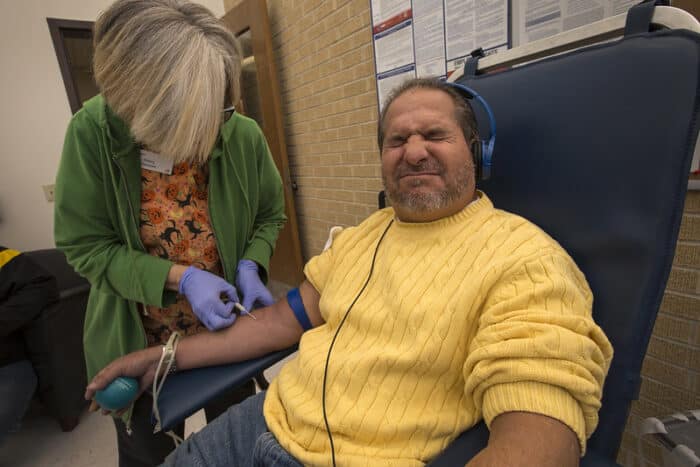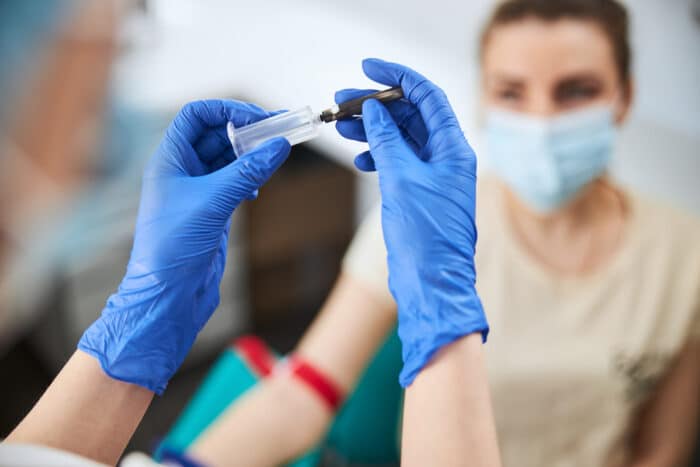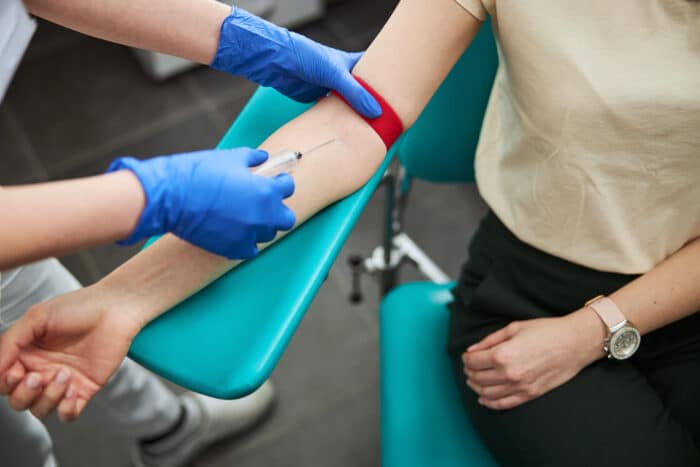Are you considering a career as a phlebotomist?
If the idea of working in healthcare and directly with patients has interested you, becoming a phlebotomist might be the perfect path for you.
But before you jump right in, it’s essential to understand the requirements and steps involved in this rewarding career.
In this article, we’ll walk you through the various aspects of becoming a phlebotomist, from the necessary education and training to the certification process.
We’ve got you covered with all the information you need to kickstart your journey as a phlebotomist.
Let’s dive in!
What is a Phlebotomist?
A Phlebotomist is a healthcare professional with the expertise to perform blood draws and venipunctures for sample collection.
While drawing blood and collecting samples are their primary responsibilities, phlebotomists are involved in various other tasks too, such as:
- Interacting with patients, explaining procedures, and addressing their concerns.
- Ensuring accurate sample labeling and documentation.
- Maintaining accurate medical records.
- Handling and transporting blood samples to the laboratory for testing.
- Supporting basic specimen processing tasks and managing inventory for phlebotomy supplies.
- Following strict protocols for infection control and safety during blood collection.
- Equipment maintenance, ensuring it remains sterilized and in good working condition.
Read more: What is a Phlebotomist
Phlebotomist Educational Requirements
The best part about becoming a phlebotomist is there is only a minimal amount of educational requirements, you just have to complete your phlebotomy training.
That’s right, all you need to do is to obtain your high school diploma or GED and you’re ready to join the workforce, with some sort of training.
After you obtain your high school diploma, you will need to enroll in an accredited phlebotomy training program.
Various institutions, like community colleges, vocational schools, and healthcare organizations, offer phlebotomy training programs.
The duration of these programs usually ranges from a few weeks to several months, and they provide both theoretical knowledge and practical hands-on experience. The topics covered include venipuncture techniques and medical terminology.
One important thing to note is while phlebotomy certification is not always mandatory, many employers prefer to hire certified phlebotomists. Certification can be obtained by passing exams offered by organizations like ASCP, AMT, or NHA.
Also read: Phlebotomy Certification
How Having Formal Training Helps Your Career
Now, you might be wondering if enrolling in a phlebotomy training program is really worth it.
Let us explore more on that front.
Well, having formal training in phlebotomy can significantly boost your career prospects in several ways.
Firstly, it provides you with a comprehensive understanding of all the essential phlebotomy techniques, medical terminology, and infection control, making you proficient in blood collection procedures.
This expertise makes you more desirable to potential employers, as they seek skilled and competent professionals.
Additionally, formal training often includes hands-on experience and practical training, allowing you to develop essential skills and gain confidence in performing venipunctures and specimen handling.
Employers tend to value candidates with formal training, as it reflects your dedication and commitment to the field, increasing your chances of landing a job and advancing in your career.
Also see: Which Two Skills are Important for a Phlebotomist?

Do You Want To Become a Phlebotomist? Check Out Free Phlebotomist Masterclass!
In our masterclass you learn:
- How to be a Phlebotomist faster…in just 2 months!
- Avoid student debt & driving to classes
- #1 thing employers want from Phlebotomists
- How to stand-apart & get a university certificate for a strong resume
Types of Phlebotomy Training
So now that you know how important it is to get phlebotomy training, the next thing you might be wondering is how to choose one, and what is available.
We’re here to help you with just that.
Here is a list of the most common types of phlebotomy training out there, out of which we recommend one the most, let’s find out:
Certificate/Diploma Program:
Certificate or diploma programs are usually offered by community colleges or vocational schools.
Their duration typically ranges between 2 to 6 months, depending on which program you choose. They provide comprehensive theoretical knowledge and practical skills required for venipuncture and blood collection.
Online Phlebotomy Training Programs (Recommended):
It’s a great idea to consider an online phlebotomy training program because it comes with many benefits.
It’s usually very affordable, and some online courses are also self-paced, which means you can study at your own pace.
The courses are flexible, so you can fit them around your schedule.
Plus, after you finish the course, you might have the chance to do an externship, which gives you valuable hands-on experience.
See more: Online Phlebotomist Classes
Also, check out PREPPY’S Online Phlebotomy Training Program here>>
FAQs
Is certification necessary?
While phlebotomy certification is not always legally required to work as a phlebotomist in all states or countries, it is highly recommended for several reasons.
Many employers prefer to hire certified phlebotomists because certification ensures that candidates have met specific standards and have passed a recognized exam.
Additionally, having certification can increase job opportunities and potentially lead to better career prospects and higher earning potential.
What is the fastest way to become a phlebotomist?
The fastest way to become a phlebotomist is by completing an online phlebotomy training program.
These programs focus specifically on the essential skills and knowledge needed for phlebotomy and can be completed in the span of a few weeks or a few months, depending on the program’s duration and your pace.
Also see: How Long Does it Take to Become a Phlebotomist
Is it hard to become a phlebotomist?
Becoming a phlebotomist is not really difficult, but it does require dedication and effort. The level of difficulty can vary depending on factors such as the individual’s prior experience in the healthcare field, the specific training program chosen, and personal aptitude for the skills involved.
While it may not be the most challenging career path, becoming a phlebotomist still requires dedication, continuous learning, and a commitment to providing quality patient care.
Related Resources:
- How to Become a Phlebotomist
- Traveling Phlebotomist
- Phlebotomist Salary
- How To Choose Phlebotomist Classes Online?
- What is the Main Responsibility of a Phlebotomist?
- What Do You Need To Be a Phlebotomist?
- Phlebotomist Degree
- Phlebotomy Externship
- Mobile Phlebotomist
- How Long Does it Take to Get a Phlebotomy Certification?
- What Jobs Can I Get With a Phlebotomy Certificate?
- Phlebotomist Cover Letter
- Phlebotomist Lab Technician
- Therapeutic Phlebotomy
- Phlebotomist Training
- Phlebotomist Education
- Online Phlebotomy Classes
- Order of Draw Phlebotomy
- Phlebotomy Internship
- Phlebotomy Interview Questions
- 4-Week Phlebotomy Classes Online
- Venipuncture vs. Phlebotomy: Differences
Related Articles
-
How to Be Successful in College in 2022 – 7 Simple Tips to Succeed
-
How Do Scholarships Work? Read This First…Truth is Shocking
-
7 Best College Majors 2024: What Should I Major In?
-
How to Choose a College – 10 Things You Must Consider in 2024
-
Why Go to College? Top 13 Benefits for Adult Students in 2022
-
Top 5 Best Alternatives to Community College for 2024








